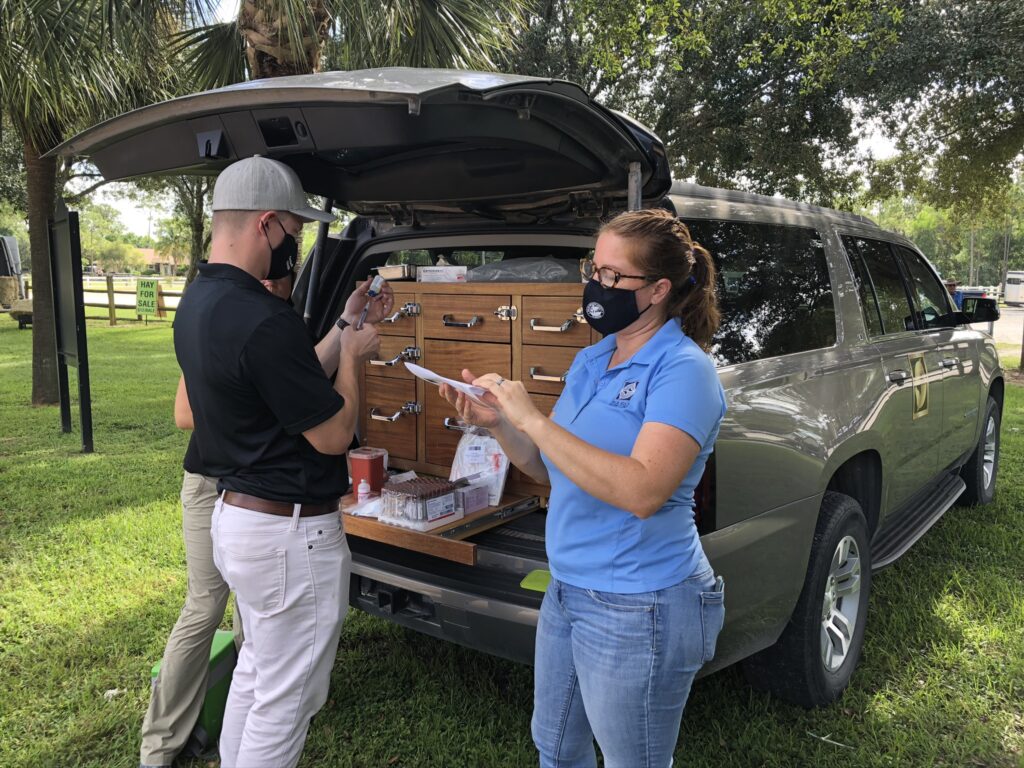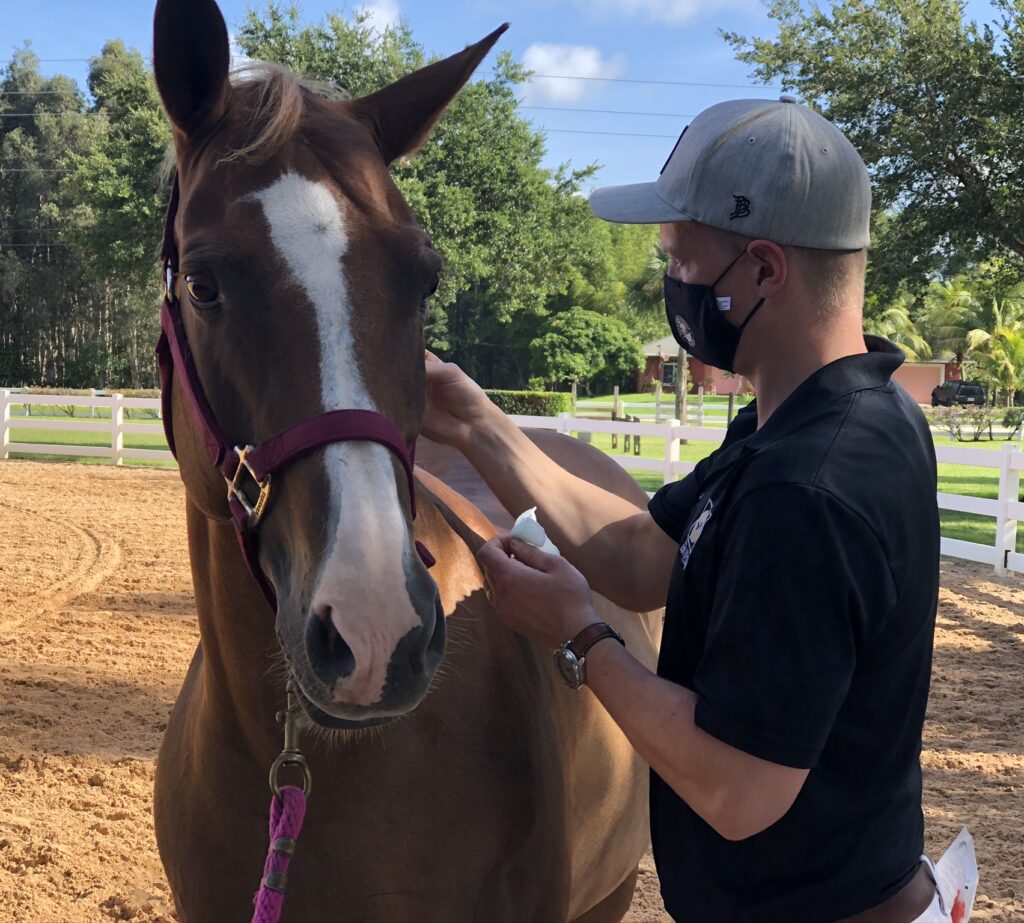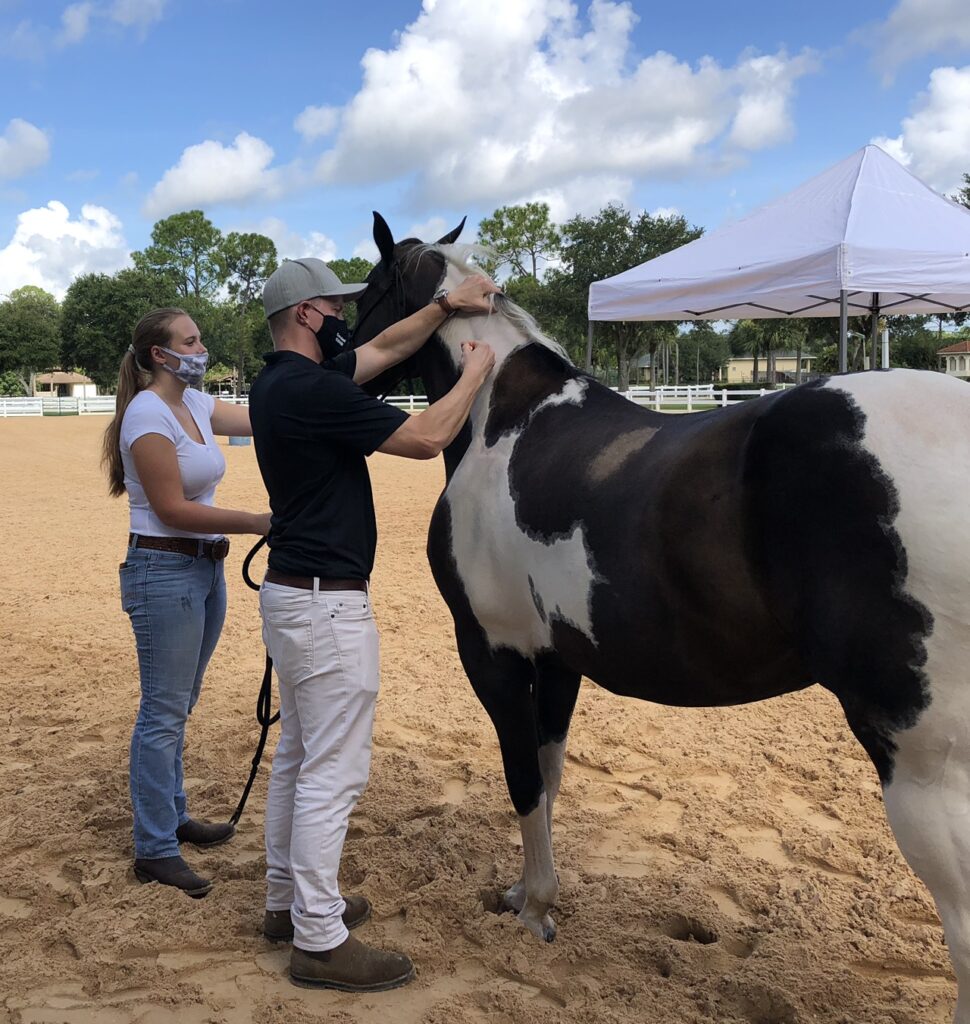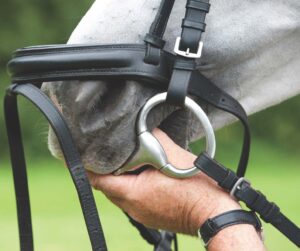
To properly operate an equine hospital, each member of the team must have the same goal in mind: high quality health care. Strong teamwork and leadership are essential, and Palm Beach Equine Clinic is fortunate to have our Equine Hospital led by Holly Hall. Born and raised in West Palm Beach, Florida, Holly has been an indispensable member of Palm Beach Equine Clinic family for over five years.
Get to know PBEC Hospital Manager Holly Hall
What is your background with horses?
My parents introduced me to horseback riding lessons when I was young. I originally rode English for a few years before finding that I had more of a desire for speed. I started barrel racing when I was eight years old and haven’t stopped since. My parents bought me my first horse when I was about nine years old, and soon that one horse turned into multiple horses. Throughout my high school years, I went to school in the mornings, worked at the barn in the evenings, and barrel raced on the weekends.
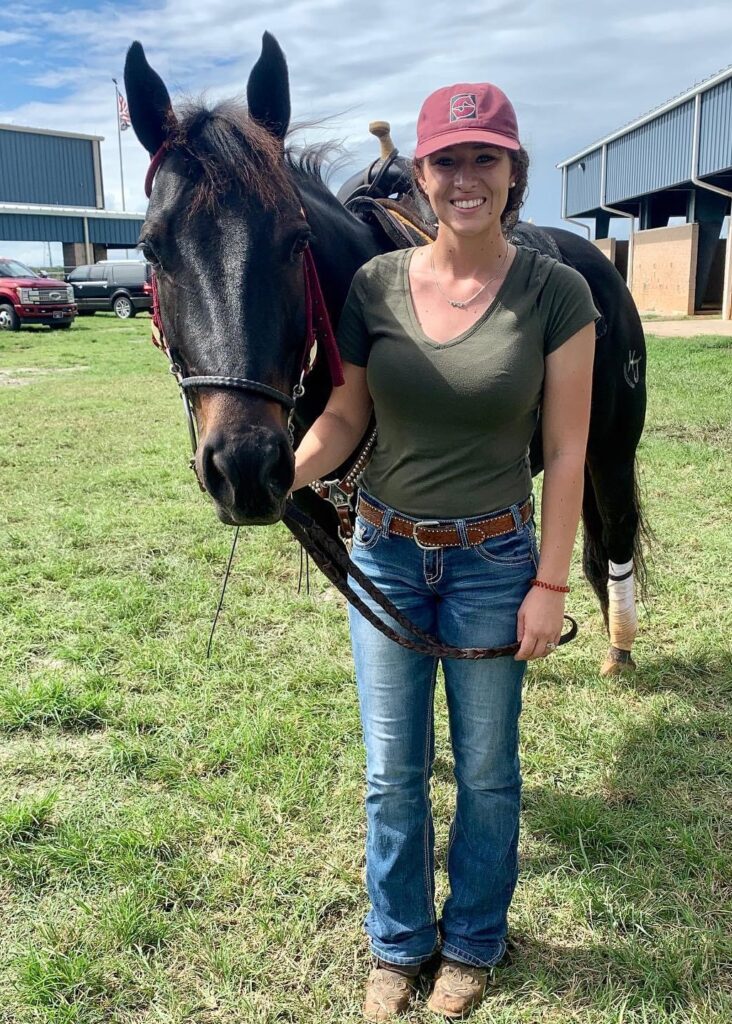
What was your original role at Palm Beach Equine Clinic?
Originally, I joined PBEC as a part time night technician and have since worked my way up to Hospital Management. Since my first days at PBEC, I have always loved the endless knowledge and experiences that I encounter and grow from every day. I immediately took an interest in emergency and surgical cases. I took every opportunity I could to experience and learn as many new things as possible about equine health.
Although my official position has always been with the hospital, I have gained experience in other aspects of the clinic throughout my time here. I am one of PBEC’s primary surgical technicians, have skills in preforming laboratory procedures, have worked with multiple doctor’s as their ambulatory technician, traveled to horse shows with our team, transported emergencies in our ambulance, and much more! I am always eager to lend a hand and take advantage of any opportunity to learn something new.
What are your daily responsibilities?
Throughout the day I manage patient care, hospital organization and our team of hospital technicians. I am responsible for updating patient’s Clinician Orders as per doctor’s orders and scheduling each patient’s treatment plan for the next 24 to 48 hours. The hospital technicians use these Clinician Orders to treat each patient and update medical records. Along with the technicians, I assist in completing treatments, procedures, surgeries, laboratory tasks, assist with admittance and prepare hospital patients for discharge. I also ensure that the hospital is well-stocked for any patient needs.
I am responsible for managing the technicians and their work schedules as we are an Emergency Hospital. The hospital is staffed with skilled technicians 24 hours a day, 7 days a week, 365 days a year. This includes all holidays and throughout storms. Our hospital team is responsible for the care of all PBEC patients, including the Intensive Care Unit (ICU)/surgery, Isolation (Quarantine), Annex (horse show) and Imaging stalls. Although our responsibilities seem endless, our hospital staff has a great system of communicating and we are dedicated to working hard for our patients and clients.
What aspects of Hospital Management do you most enjoy?
I really enjoy the intensity of helping with emergency cases and working in a surgical setting. Being a part of the initial work up, diagnostics, and watching our patients progress on their road to recovery is very satisfying. You never stop learning in medicine, and I appreciate the endless opportunities that I have to learn.

It is also interesting to be able to work with such a wide variety of horses. As technicians first and foremost, we must have the skills as horsemen to recognize the horse’s behaviors for personality traits versus potential changes to the state of their health. Carefully recognizing these symptoms and abnormal behaviors contributes to each patient’s treatment and enables us to make sure the horses are as comfortable and happy as possible.
Although our work is focused on the horses, we work with a large team of people to provide with best care possible. All our staff –veterinarians, technicians, interns, residents, specialists, surgeons, laboratory, pharmacy, imaging, and office administration –contribute to high quality patient care. I enjoy being a part of this team and watching all our efforts come together for our patients and client needs.
When not in the Equine Hospital, what do you enjoy doing or where can we find you?
My husband and I love being outdoors. We typically find ourselves out in the woods, on the water, or (of course) on the back of a fast horse! We mostly enjoy air boating and barrel races during our free time. Enjoying the company of our close family and friends, while doing what we love the most.
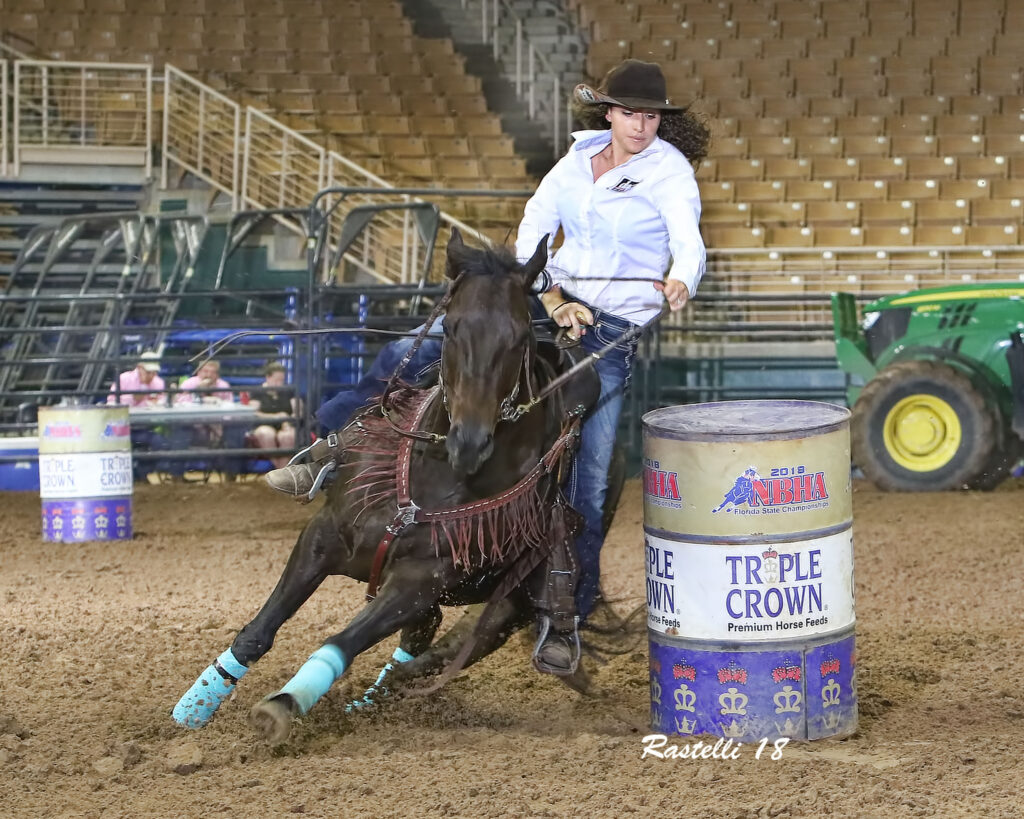


Palm Beach Equine Clinic veterinarian Dr. Marilyn Connor was recently featured in The Equestrian Podcast by My Equestrian Style where she explains her path to practicing equine medicine. Listen and learn about Dr. Connor by clicking on the recording below. For more on Dr. Connor, click here to read more about her and her interests in veterinary care.
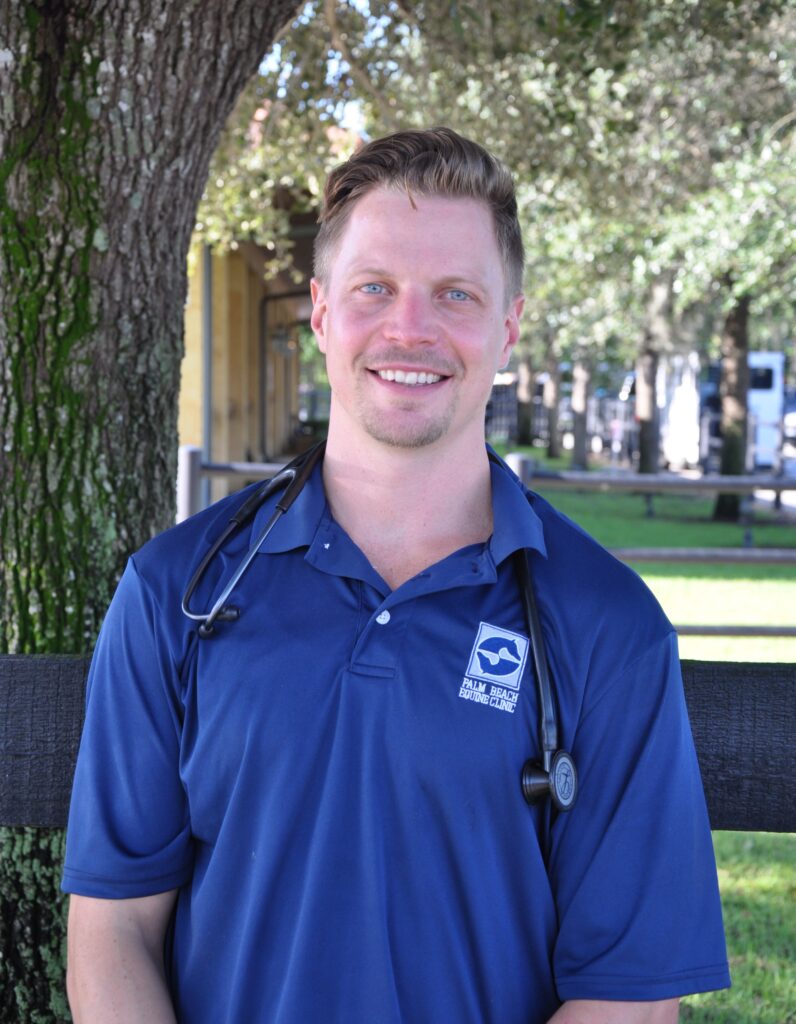
Dr. McColough completed his undergraduate studies at Wake Forest University with a double major in Biology and Spanish. Upon graduation, Dr. McColough obtained a certification in Phlebotomy and worked as a Biomedical Research Technician for Weill Cornell Medical College in New York City. In this position, he performed hematology and oncology research assays, blood and bone marrow processing, separation, analysis, and cryopreservation, and analyzed cells for DNA extraction.
Dr. McColough volunteered for the Sea Research Foundation in his home state of Connecticut, where he led immunophenotyping for the Marine Mammal Immunological Diagnostics Program that was funded by the Office of Naval Research. His efforts in data analysis contributed to the programs ability to receive grant funding. Dr. McColough also volunteered for the Aquatic Animal Health Center of New York Aquarium as a veterinary assistant where he worked with diverse marine life, such as penguins, walruses, otters, seals, and various fish and amphibians.
Evolving from sea to land animals, Dr. McColough gained experience as a veterinary technician for a small animal hospital in New York City, and then decided to pursue a doctorate in veterinary medicine at the Royal Veterinary College of London in the United Kingdom. Throughout his studies, he completed several research projects, including the investigation of early loss of pregnancy in thoroughbred mares, and the culture, fluorescent microscopy, and flow cytometric analysis of primary equine trophoblast cells. Dr. McColough completed an externship at Palm Beach Equine Clinic during his final year of veterinary school and has been keen on pursuing a career in equine sports medicine.
Palm Beach Equine Clinic is proud to welcome new intern Charley McColough, BVetMed, MRCVS, to our team! Learn more about Dr. McColough:
What inspired you to become a veterinarian?
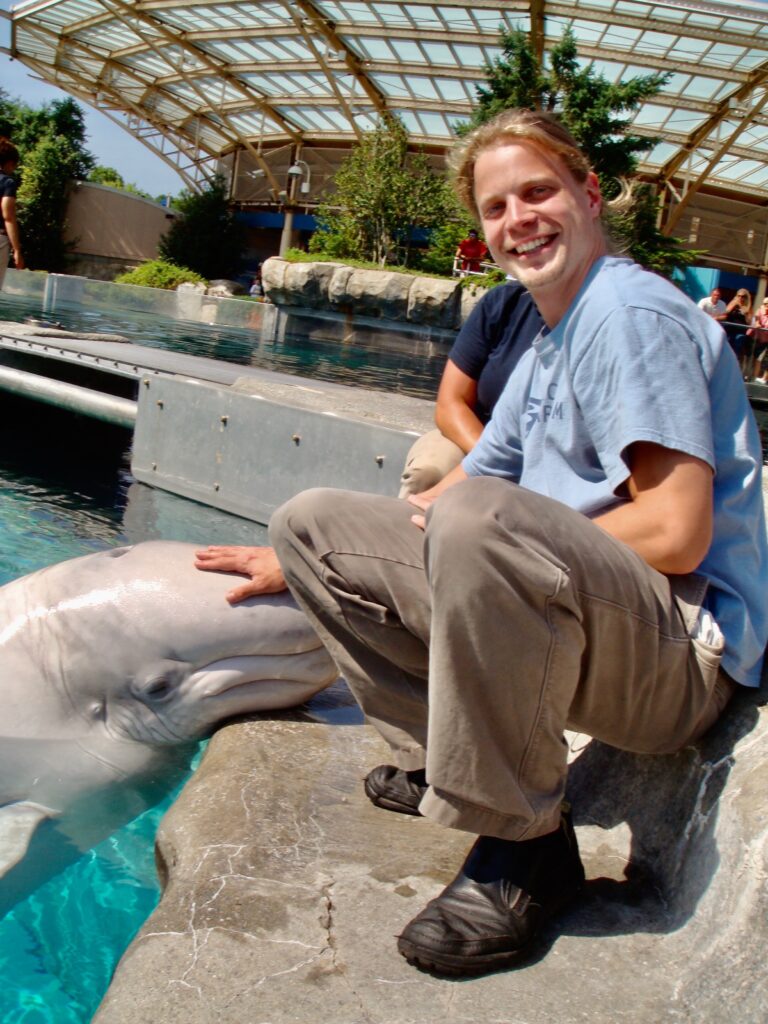
The dream started for me while I was a Research Intern at the Mystic Aquarium in Mystic, CT. I was performing immunology assays on beluga whale blood and working closely with the veterinary team. I was both profoundly impressed and mystified by the skill set and knowledge base that the veterinarians exhibited. Simply put, I wanted to know what they knew.
Why did you choose to pursue equine medicine?
I have wanted to work with large animals since I was a veterinary technician at a small animal practice in Greenwich Village of New York City. I was working with toy breed dogs – some of which never seemed to set foot on the ground – all the while dreaming about working outside with large animals. I was drawn to, and began my veterinary profession in, the equestrian industry because I have been keenly interested in the athleticism of the horse.
Are there any standout cases that you have especially enjoyed working on so far at PBEC?
There was a case that was referred to PBEC following a laceration and repair in the region of the lower jaw. The horse recovered from the laceration but saliva would spurt from the wound when the horse ate. It was amazing to watch the PBEC team catheterize the parotid salivary duct from the buccal surface of the mouth and use ultrasound to catheterize the same duct as it left the parotid gland caudal to the mandibular ramus. The surgeons were able to dissect down and locate both ends of the severed parotid duct and oppose them over a continuous catheter placed from the gland to the buccal surface. Essentially, they found two needles in a haystack and reconnected them to allow proper flow of saliva for the horse.
When not at PBEC, what do you enjoy doing and where can we find you?

In past years, you might have found me on a rock climbing wall or tossing a Frisbee in a wide open field. Nowadays, you’ll find me at home with my wife Ashley and our 9-month-old son Max, making tacos and burgers out of his Fisher-Price food truck.
Congratulations to Palm Beach Equine Clinic’s own Kim Emmons on her completion of the American Association of Equine Veterinary Technicians (AAEVT) Equine Certificate Program!

Kim has over 25 years of experience as a certified veterinary assistant, but she was eager to advance her knowledge through this additional certification. Now, she is formally recognized as an equine specialist in the field, distinguished by the American Association of Equine Practitioners (AAEP) and the AAEVT. She also serves as an AAEVT Regional Contact for Florida, Alabama, Georgia and South Carolina. The AAEVT Regional Contacts, along with the Board, meet monthly via zoom call to discuss training and education, local and regional happenings in the equine veterinary industry, business plans, and more industry news.
To acquire this certification, Kim completed courses on equine diseases and parasitology, nursing care, pharmacology, surgical assistance and anesthesia, laboratory diagnostics, imaging modalities and much more.
Palm Beach Equine Clinic has been incredibly fortunate to have Kim as part of our team for over 22 years. Her steadfast dedication to providing the highest quality patient care, contributions to hospital management, and willingness to lend a helping hand in any situation are qualities that make Kim an incredible person and asset to PBEC. Please join our team in congratulating Kim on her accomplishment!
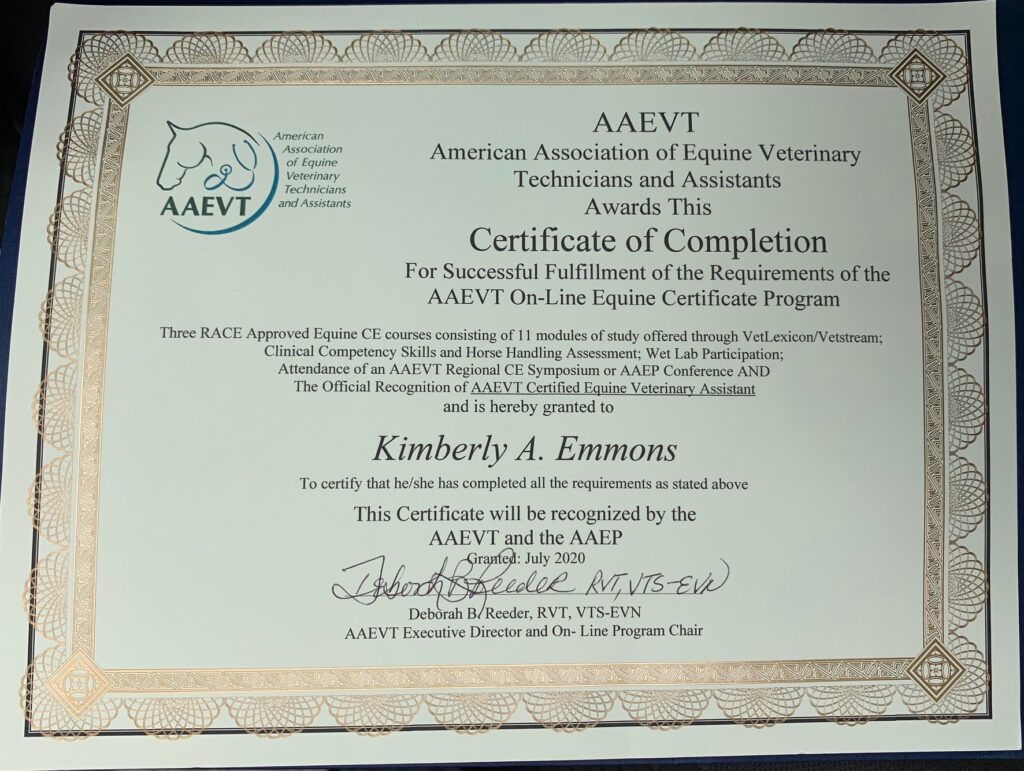
Palm Beach Equine Clinic provided veterinary services for horse owners as part of a new clinic series by the Acreage Landowners’ Association, Western Equestrian Shows and Trails, and the Indian Trail Improvement District.
Loxahatchee, FL (August 18, 2020) – Kicking off a first-of-its-kind clinic series for horse owners of western Palm Beach County, several Acreage groups enlisted the veterinary team of Palm Beach Equine Clinic (PBEC) to provide hurricane preparedness expertise. The clinic, held on August 15, 2020, at Nicole Hornstein Equestrian Park in Loxahatchee, Florida, was originally scheduled for the first of the month, but was postponed in true Florida fashion due to Hurricane Isaias.
The Equine Hurricane Preparedness Clinic garnered a couple dozen attendees, masked up with their horses in tow. Kim Emmons, Western Equestrian Shows and Trails (WEST) Clinic Director and certified equine veterinary technician, is the driving force behind the event series.
“I’ve lived in and have been active in our local equestrian community for over 20 years,” said Emmons, who led the discussion on best practices for horse owners during hurricane season.
“The goal of this clinic series is to educate our local equestrian community and provide opportunities for horse owners of all ages and disciplines to become better, more well-rounded horsemen.”
Kim Emmons
Through attending equestrian events, teaching at camps, and her experience as a veterinary technician, Emmons has met many horse owners who lack the correct skills and knowledge on basic horse health and care. “I have always found it really rewarding to share my knowledge by teaching people the proper, practical skills for caring for their horses. Things such as correct leg bandaging, taking their horse’s vitals, listening to gut sounds, and teaching people on when they need to call a veterinarian are all essential for a horse owner to know. I used to teach an equine healthcare camp, and I am so proud to see those young campers grow into the smart, well-rounded equestrians they are today.”
The clinic series is free to attend, with fees for trailering in and offered membership packages, and will be based at Nicole Hornstein Equestrian Park for the foreseeable future.
PBEC provided special reduced rates on equine vaccinations, Coggins (Equine Infectious Anemia) testing, and microchipping services performed by Dr. Janet Greenfield-Davis and Dr. Charley McColough.
“We understand that, especially now in these pandemic times, many people are struggling to cover their horse’s expenses,” said PBEC veterinarian Dr. Greenfield-Davis. “We are happy to be here for the community by providing these essential services at more affordable prices and in a more convenient location for the Acreage horsemen.”
WEST, a new subcommittee of the Acreage Landowners’ Association (ALA), is led by fellow longtime Acreage resident Dixie Thiery.
“All of our efforts are focused on promoting and protecting the wonderful equestrian lifestyle we are lucky to enjoy here,” said Thiery. “We hope that WEST and this clinic series will help strengthen our community by giving people an easy, convenient way to learn and meet their neighboring equestrians. We are also very fortunate to be supported by the Indian Trail Improvement District, which is responsible for this park, and we are working with them to update our local trail system maps and better plan for equestrian-safe roadways and developments.”
ALA, WEST, ITID and PBEC plan to work together in the future by collaborating to bring horse shows, tack sales, exhibitions, and other educational events for equestrians to the area. The association’s next clinic is planned for September 19 and will focus on basic equine first aid.
In January of 2020, Palm Beach Equine Clinic veterinarian and board-certified surgeon Dr. Weston Davis performed colic surgery on Bull Run Jumpers Prince of Peace. Piloted by Kristen VanderVeen, “Prince” has proven he has fully recovered and is back in peak condition in August of 2020 by claiming the top spot in the $36,600 Traverse City Speed Classic CSI3* at the Great Lakes Equestrian Festival.
Congratulations to this fantastic pair from the entire PBEC Team!
Palm Beach Equine Clinic is incredibly proud to have been entrusted with the health and well-being of Prince and numerous other colic surgery patients who have gone on to make full recoveries, returning to training and competing as they were before the colic.
Each colic surgery case has its own specifics, and during Prince’s recovery, he particularly benefited from strategic veterinary use of the regenerative therapy RenoVo to strengthen the abdominal wall at the surgical incision. Dr. Davis adjusted Prince’s recovery plan as he returned to more intense exercise by using this regenerative medicine to provide some cellular scaffolding and growth factors to encourage proper tissue repair of the abdominal wall.
For more information on colic surgery, regenerative therapies, or to talk to Dr. Davis about your own horse’s needs, please call 561-793-1599 or fill out the form below.
Get in Touch with Palm Beach Equine Clinic
From The Pharmacy: New Xiang Ru San
Option for Anhidrosis

Palm Beach Equine Clinic is proud to offer a wide range of treatments and therapies, including select Chinese herbal medicines. New Xiang Ru San is one such herbal medicine that can be used to treat horses suffering from anhidrosis, or the inability to sweat normally. Anhidrosis can be a common challenge, particularly in hot, humid climates. New Xiang Ru powder has proven to be a clinically effective aid for non-sweaters as it promotes heat and fluid disbursement through healthy sweating. New Xiang Ru San is a blend of the Chinese herbs Bian Dou (hyacinth bean), Xiang Ru (mosla), Hou Po (magnolia bark), Lian Qiao (forsythia) and Jin Yin Hua (honeysuckle flower).
Chinese herbal medicine is a relatively new treatment among equine veterinarians in the western world, but the philosophy of using herbals in healing has existed for thousands of years as part of Traditional Chinese Veterinary Medicine (TCVM). An adaptation of all-natural methods used to treat humans, herbal medicine for animals utilizes ancient Chinese formulas aimed at understanding and treating the underlying causes of a particular disease or illness in order to help the body heal itself, rather than only treating the presented symptoms.
Talk to your PBEC veterinarian about options for treating anhidrosis or call 561-793-1599 to set up an appointment.
Appointment Request
Please fill out this form and our staff will contact you to confirm an appointment.
A Healthy Mouth is a Supple Mouth
Healthcare Reminder: Equine Dentistry
The general goals of equine dentistry may appear straight-forward but include a complex system of evaluations that in turn affect the entire body and well-being of a horse. At its core, equine dentistry encompasses the objectives of maintaining even tooth wear, treating infection or disease, allowing for proper digestion, and promoting longevity. Dr. Tyler Davis of Palm Beach Equine Clinic says that routine and thorough dental exams can help prevent many issues from ever becoming problems.
Why do horses require dental care?
Horses grind their food into a finely masticated bolus before swallowing. The combination of a horse’s upper jaw being larger than the lower jaw, and the fact that a horse chews by moving their jaws from side to side results in uneven wear of the teeth. This uneven wear may cause sharp edges to form, which hinder efficient chewing and may ulcerate or tear the cheeks and tongue. Uneven wear can also cause the horse to swallow food that isn’t properly chewed and can lead to more daunting problems such as colic.
No horse is exempt from needing their teeth cared for by a veterinarian. For sport horses, however, dental care becomes even more crucial. Much of the connection between horse and rider comes by way of the horse’s mouth, and depending on the discipline, the horse may always have pressure in their mouth. If there are problems or discomfort within the mouth, it can become evident in the horse’s performance and disposition under saddle.
According to Dr. Davis, having a horse’s teeth in perfect shape allows one to immediately rule out dental issues when trying to troubleshoot a performance problem. A “sound mouth” also allows the best condition for supple, soft, and accurate connections between horse and rider through the bridle.
What is floating?
On a basic level, most horses require a routine float. Floating is the term for rasping or filing a horse’s teeth to ensure an even, properly aligned bite plane. While floating is the physical process, the scope of equine dentistry is much broader and examines the horse’s overall health as influenced by the mouth.
“A proper dental exam using a lightweight speculum, a very good light source, and a dental mirror allows me to see any possible problems and prevent those problems from becoming painful and affecting a horse’s performance and overall health,” said Dr. Davis.
How often should you have a veterinarian perform a routine dental exam on your horse?
Dr. Davis recommends an exam every 12 months at a minimum. For many sport horses, the demands of their competition schedule may require bi-yearly exams to prevent any problems that could sideline them from training or events. Lastly, any horse with a history of dental problems may require exams every three to four months. Without routine dental exams by a veterinarian, uneven wear can escalate to a serious health problem.
The most common signs of dental discomfort in horses include:
- head-tilting and tossing
- difficulty chewing
- bit-chewing and tongue lolling
- tail-wringing, bucking and other behavioral issues
- drooling and bad breath
- (sometimes) weight loss and spillage of grain
Technological Advances
While it is the owner’s responsibility to develop a diligent care routine, the veterinary community has done its part by continuously improving evaluation and diagnostic technology. Advances in instruments, such as the speculum and imaging technologies, allow veterinarians to better understand and examine the equine mouth. In turn, they are able to diagnose and treat dental problems more effectively.
Equine dental health is far more involved than simply evaluation the outward appearance of the teeth. While trained eyes can see external problems, and educated hands can feel for abnormalities, assessing internal issues can be done through diagnostic imaging. Improved imaging technology has greatly expanded Dr. Davis’ ability to find and analyze unseen problems in the mouth.

Portable imaging technology, such as digital radiography (x-rays) allows him to conveniently understand dental pathology better for his patients in the field. While Standing Computed Tomography (CT) allows Dr. Davis to capture a comprehensive, multiplanar profile of all the structures within the horse’s head, with the horse only lightly sedated.
“Having these advanced imaging modalities available for my patients allows us to thoroughly identify an issue and then intervene as early as possible to treat the issue, relieve discomfort, or prevent tooth loss,” commented Dr. Davis.
Contact your veterinarian at Palm Beach Equine Clinic for more information on equine dentistry, or to schedule a dental exam, at 561-793-1599.
Get in Touch with Palm Beach Equine Clinic
Contact us by filling out this form.
Bella Ciao: Back Out Front

Racehorse Bella Ciao Undergoes Surgical Repair
Trainers Alessandro and Antonio Sano reviewed a daunting x-ray on the morning of April 19, 2019. Their three-year-old Thoroughbred filly Bella Ciao, owned by Cairoli Racing Stable and Magic Stables LLC, had just finished a breeze in 49 seconds flat when she suffered a fracture in her right front leg.
She exited the track at Gulfstream Park West, her home racecourse in Miami Gardens, FL, with her racing fate hanging in the balance.
“She is a tough filly with a lot of heart, and she walked herself back to the barn where we had x-rays taken,” said Alessandro, who met with the track veterinarian right away to identify the problem. “When we saw it, we were nervous that she was headed to the breeding shed, and her career was over.”
Alessandro and his father, however, were not willing to give up on their special filly. They entrust Palm Beach Equine Clinic’s board-certified surgeon, Dr. Robert Brusie, with care of their entire string of racehorses, and quickly decided to send the x-rays for his review. Dr. Brusie quickly identified a condylar fracture and advised a surgical repair. Immediately after her diagnosis was confirmed, Bella Ciao made her way to the Hospital at Palm Beach Equine Clinic.
Identifying a Condylar Fracture
A condylar fracture is a repetitive strain injury that results in a fracture to the cannon bone above the fetlock. The fracture is a result of excessive strain and weight carried over the cannon bone during high-speed exercise. It emerges from the fetlock joint running laterally up or medially out the side of the cannon bone, essentially breaking off a corner of the bone.
“A condylar fracture is a disease of speed,” said Dr. Brusie. “A condylar fracture was once considered the death of racehorses. As time and science progressed, it came to be considered merely career-ending. Currently, veterinary medical sciences are so advanced that we have had great success with condylar fracture patients returning to full work.
“Luckily, with today’s advanced rehabilitation services, time, and help from mother nature, many horses can come back from an injury like this. My prognosis for Bella Ciao after surgery was very good,” said Dr. Brusie.
Dr. Brusie performed Bella Ciao’s surgery and inserted five screws to repair the fracture.
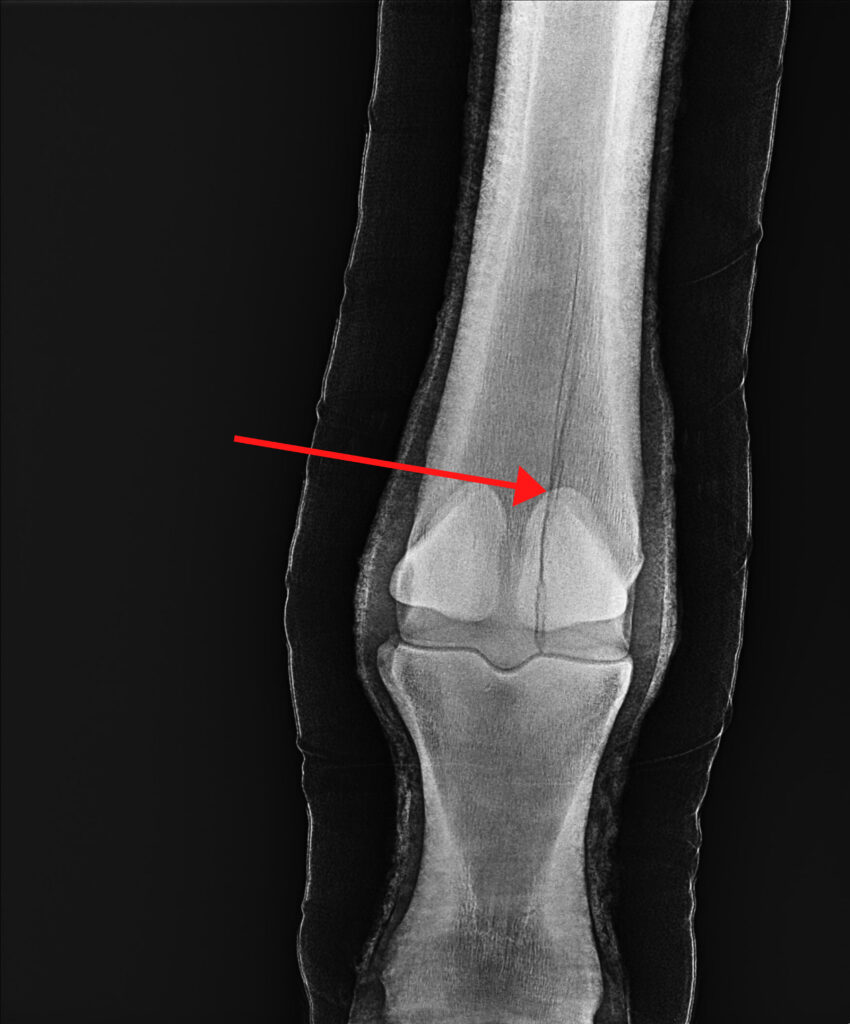

From left to right: Digital radiographs show the condylar fracture to the right front leg, and the five screws that completed the surgery.
“He does an excellent job with all of our horses. We wanted to give it a shot for Bella Ciao, and it paid off,” said Alessandro. He and his father, Antonio, have worked with Dr. Brusie on many horses, including a past Kentucky Derby runner and horses winning in excess of million-dollar purses. “He told us that she would be back to the track, so we followed his instructions perfectly.”
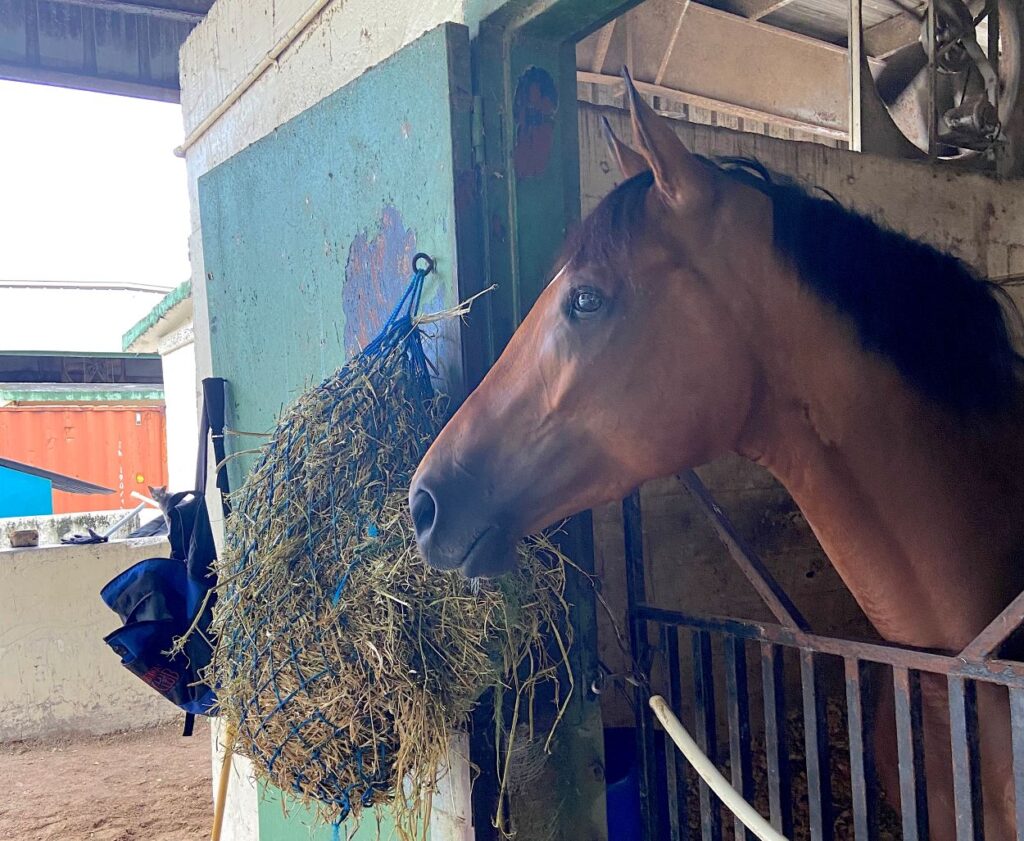
Back On Track
Dr. Brusie prescribed stall rest and hand walking for the first several months of Bella Ciao’s recovery. She slowly began jogging, and then breezing.
On October 27, 2019, she returned to the track in a $45,000 Allowance race. With Leonel Reyes up in the irons, Bella Ciao made her comeback in storybook fashion by winning that race and coming out fit, sound, and healthy. Now a four-year-old, Bella Ciao won again on April 30, 2020, and most recently placed third in a $60,000 race on June 27.
“While treatable, a condylar fracture is not an easy injury to come back from, but Dr. Brusie is one of the best surgeons in the country, and we trusted him,” said Alessandro, who has been working with Dr. Brusie since he and his father moved their business from Venezuela to the U.S. in 2010. “She recovered brilliantly, and we could not be happier with how she is going now. She is a special filly, and we are thrilled that we took this chance on her.”
A Look at Palm Beach Equine Clinic’s Advanced Imaging Technology
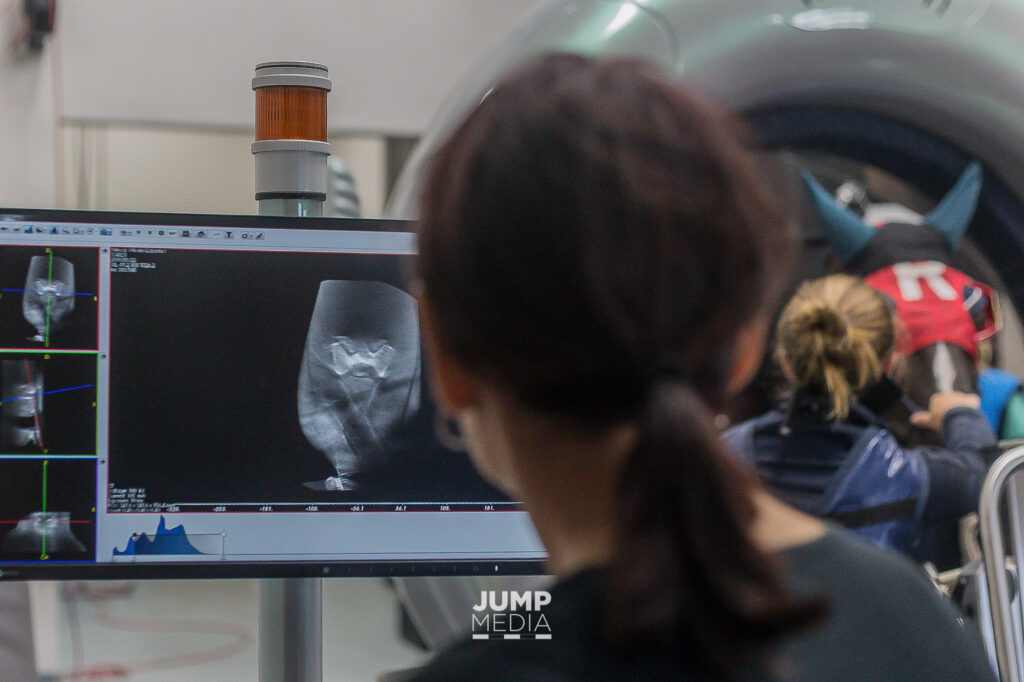
Photo by Jump Media
Palm Beach Equine Clinic takes pride in being a world-class facility for the diagnosis, treatment, and recovery of some of the industry’s most valued sport horses, as well as backyard companions. A vital area of the Equine Hospital that helps veterinarians to diagnose subtle or acute lameness is the Advanced Imaging Department.
Producing thousands of scans a year across all modalities, the Palm Beach Equine Clinic Imaging Department offers an on-staff, board-certified radiologist, and equipment that elevates the effectiveness of lameness diagnostics. Lameness is no longer a guessing game as PBEC veterinarians have an arsenal of imaging technologies to capture inside the horse.
Tour the PBEC Imaging Department:

Nuclear Scintigraphy (Bone Scan)
Nuclear scintigraphy begins with the injection of a radioactive isotope called Technetium 99 that is bound to a phosphate analogue. The isotope – phosphate molecule attaches to the mineral matrix of the bone in areas where bone is active. A gamma camera is then used to capture images of the skeletal anatomy. Points that “light up” on the image indicate increased metabolic activity as a possible site of injury.

Standing Magnetic Resonance Imaging (MRI)
The standing MRI produces highly detailed, cross-sectional images of bone and soft tissue in multiple different planes to fully image a desired region. The standing MRI requires sedation (not anesthesia) and is best used to further define a specific area that has already been pinpointed as the origin of lameness.
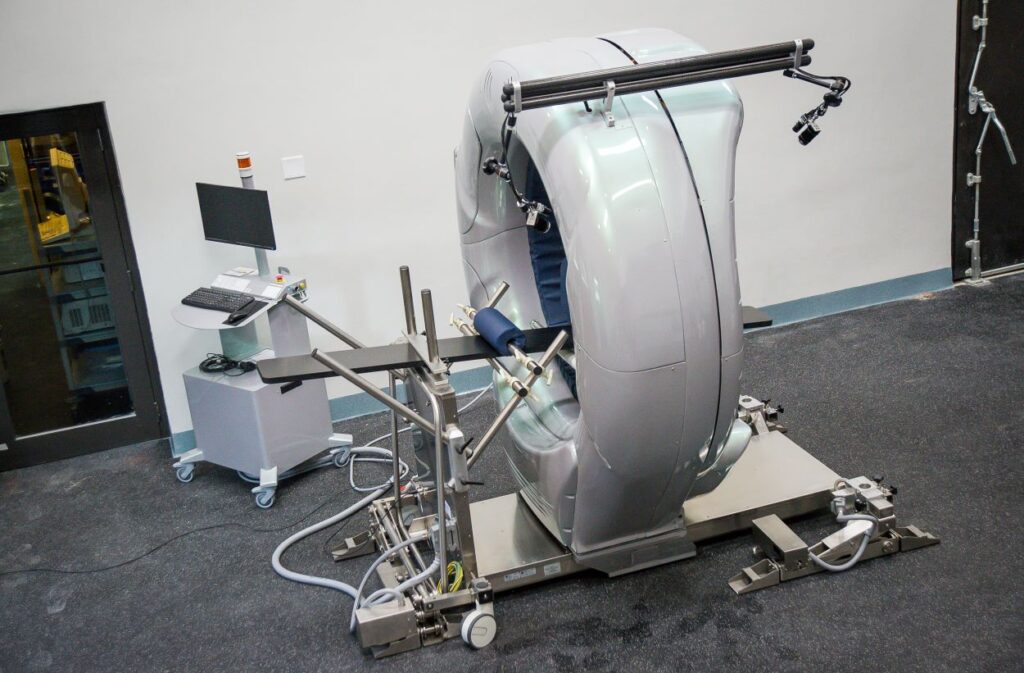
Computed Tomography (CT)
Similar to its use in humans, CT allows veterinarians the unique opportunity to conveniently explore areas of a horse’s body that were previously inaccessible. The machine produces 360 degree images of a horse’s neck, spine, and head and can be conducted while a horse is standing and under only light sedation.
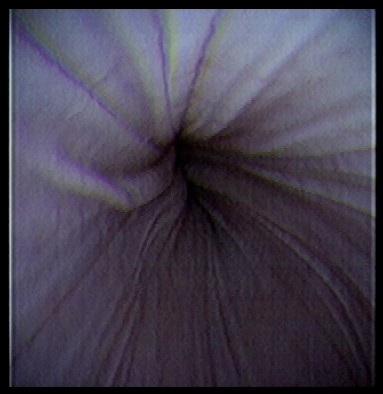
Endoscopy
An endoscope is an instrument that allows veterinarians to look inside the body by being inserted through a natural opening or incision. A tiny camera on the instrument allows an in-depth view of internal structures such as the upper and lower respiratory track, gastrointestinal and urinary tracts, as well as the cervix and uterus of mares.

Digital Radiography
Used routinely, radiographs are traditional x-rays that are made available within seconds for digital viewing and evaluation.
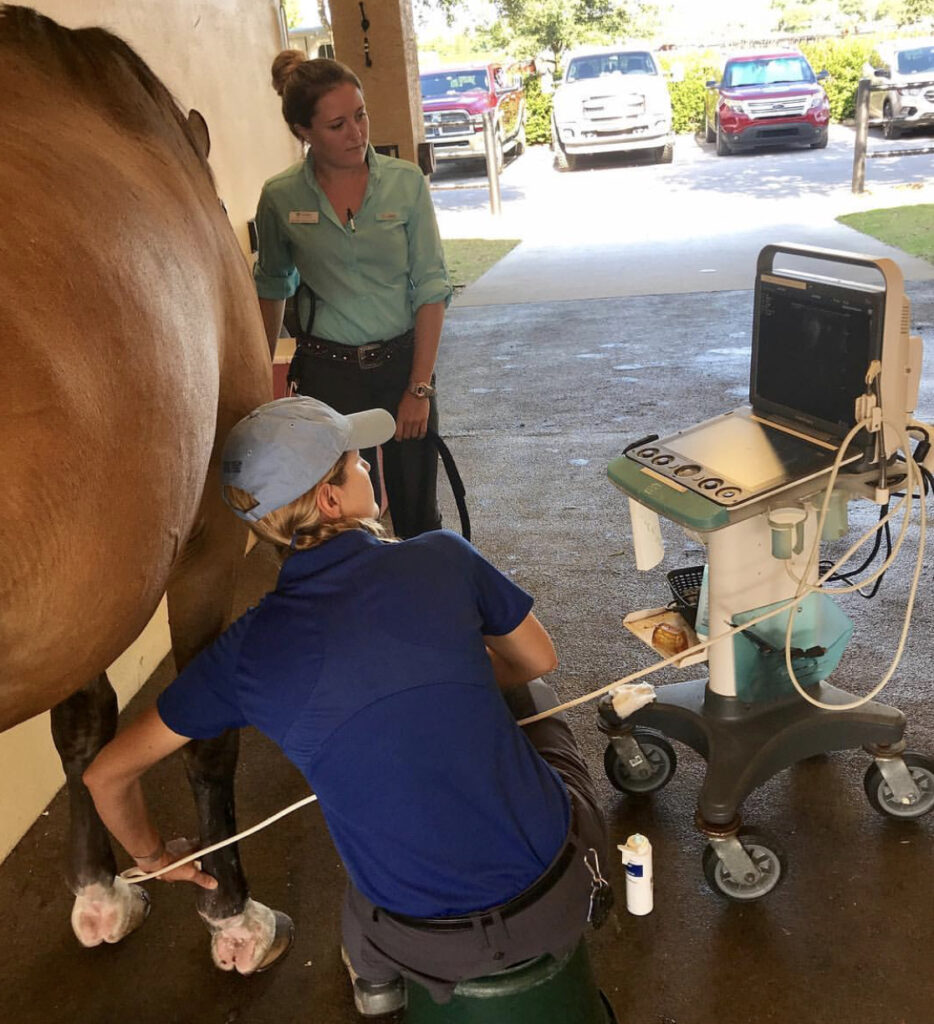
Ultrasonography
An ultrasound machine generates high-frequency sound waves, which echo an image back to the machine where bone appears white, fluid appears black, and all other structures are on a grayscale. An ultrasound is non-invasive, usually does not require sedation, does not use radiation or require injecting radioactive isotopes, and provides real-time images.
“These tools can give a definitive diagnosis, and that saves time and money in the long run,” said board-certified radiologist Dr. Sarah Puchalski. “For example, if a horse goes lame and it gets seen and treated empirically, which is a diagnosis based on likely problems through common diagnostic procedures, it either stays sound or it becomes lame again or even non-functional in three to six months. This method sets back the commencement of the appropriate therapy.
“What these modalities do is allow the horse to be treated early and correctly,” continued Dr. Puchalski. “Otherwise, you may not be treating the correct issue, and the horse could end up lame again very soon.”
Brittany Riddle, manager of PBEC’s Nuclear Scintigraphy Department, is fascinated by the structure of the horse’s body and helps to produce hundreds of bone scans per year.
“I’ve always had a strong interest in the anatomy of horses,” said Riddle, who spends her workday keeping patients comfortable and calm while operating a gamma ray camera housed in its own suite at Palm Beach Equine Clinic. “The horses are under light sedation for standing scans and these usually take from one to four hours depending on the type of scan. Usually during the winter competition season, we have anywhere from two to three horses being scanned daily.
“The variety of patients we treat is always interesting,” continued Riddle. “We see patients from all aspects of the industry. From racehorses to polo ponies, western performance, dressage, top show jumpers and hunters.”
According to Palm Beach Equine Clinic President Dr. Scott Swerdlin, having the latest in diagnostic capabilities drives the success of the Clinic.
“Many years ago, we committed to establishing Palm Beach Equine Clinic as an all-inclusive hospital and making it the most advanced referral center in the country,” said Dr. Swerdlin. “By investing in the very best personnel and equipment, we are able to provide the very best care we can for our patients.”
